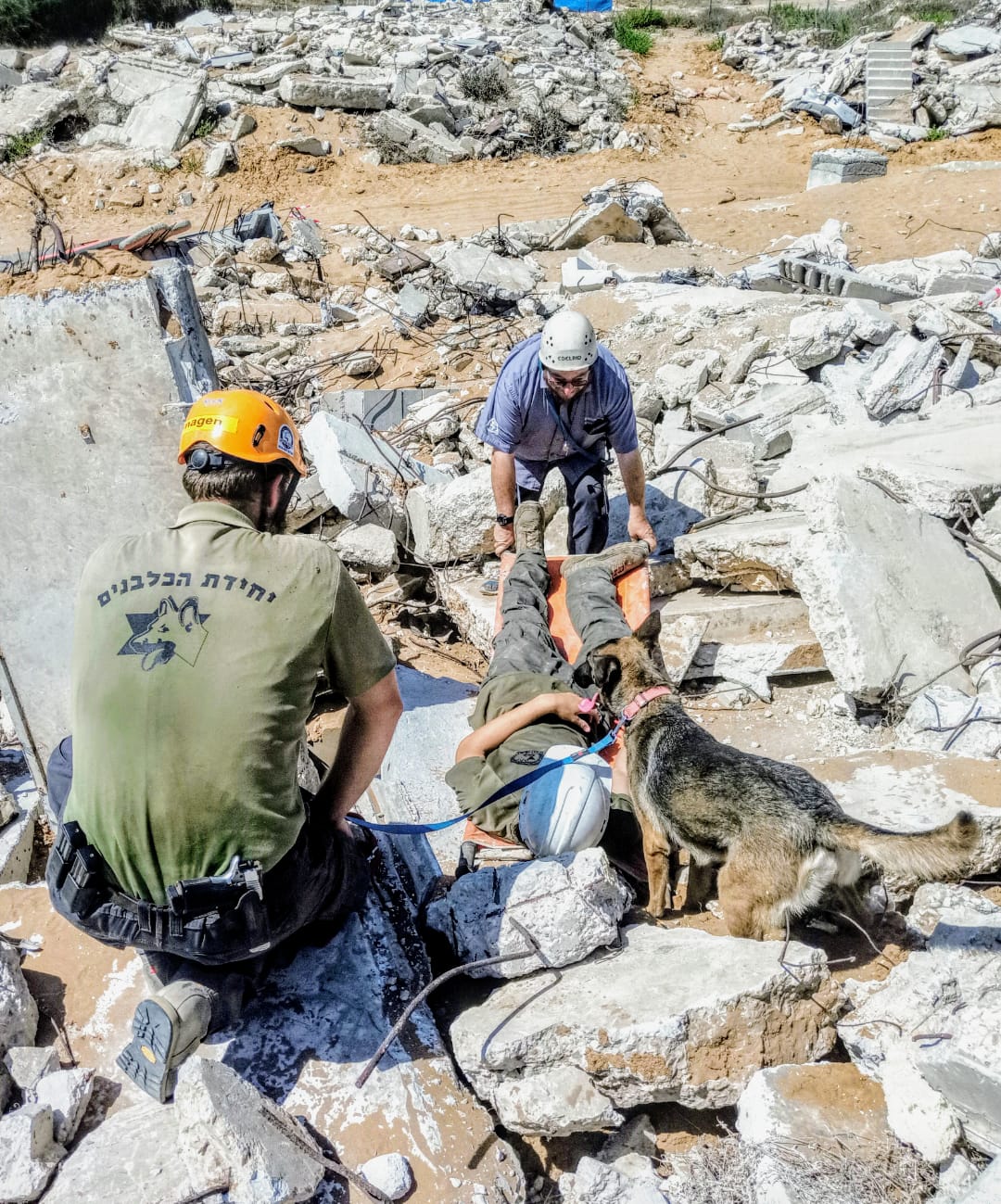Disaster Training
A blazing noontime sun and a cloudless coastal sky set the backdrop of our exercise as we pulled into the training center near Netanya. If you don't know what you're looking for, you might think that you're seeing the place where a training center once was - the whole area is heaped with chunks of buildings, some still recognizable, with clear evidence of heavy machinery moving around trying to sift through the rubble.
Although there has been no actual collapse, the fact that it looks like there has is just what we want - nicknamed the 'rubble site' by our volunteers, these heaps of debris are where the Israel Dog Unit, the IDF's Home Front Command, and other disaster relief services train to find and rescue people trapped in collapsed buildings. There are times when trips there are accompanied by the din of heavy machinery, hand tools, and crew shouting to one another as they tear apart concrete and rebar bit by bit, but today is relatively calm as we unpack our gear.
The first order of business is a safety briefing and inspection; the heaps of rubble are far more dangerous than they appear, with rusting metal and jagged concrete bristling from every square meter. Pieces of concrete can give way at even a light touch, dropping a slab of cement onto someone below or pitching a rescuer head over heels into the debris. A misstep or moment of carelessness can see someone impaled on exposed metal struts or trapped between concrete slabs. We take no chances while training; anything that could get hung up on a hook or beam is removed, hard hats are donned, the sandals and short pants favored for the summer heat are exchanged for working clothes and footwear. It's hot and heavy gear, but better than the alternative.
We begin with a quick walk around the site to understand what we will be dealing with during this exercise. Other units use this area when we aren't around, so the layout of the rubble is never exactly the same twice; even today, some new chunks have been dumped on the piles, and there is clear evidence of someone practicing with an earthmover. One volunteer carries a specially marked, insulated box, from which he occasionally hides something in the ruins.
We begin training with dogs that have never been exposed to rubble. It is a sudden enough change from the terrain they usually see that some of them are skittish about approaching the ruins; the volunteers coax them along with encouragement and examples, stepping onto the rubble themselves to show the dog that there is nothing to fear. Each gets to experience finding a person and is given a toy as a reward.
Next up are the more experienced search dogs, ones who have been here several times in the past. They scamper eagerly into the ruins, searching determinedly for the volunteer playing the part of a trapped civilian; when they find him, they stay as near to him as the rubble allows, barking until the handler can make contact with the victim and help him out of the rubble.
Last up are the cadaver dogs, trained specifically to find the deceased as opposed to living people. WE allow them to circle the ruins until they pick up on what was hidden earlier - a scent sample scientifically proven to mimic exactly the odor of human decay, allowing us to train our dogs to ignore other scents and focus on people. They are as friendly and good-natured as any of our furry friends, unaware of the gravity of their task, and lead us to the scent markers in short order.
A debriefing is held to analyze the performance of both dogs and volunteers, and the Israel Dog Unit packs out. We haven't covered everything, of course, but still, we leave happy with our dog's performance and knowing that we are that much more prepared to help if we are needed.
